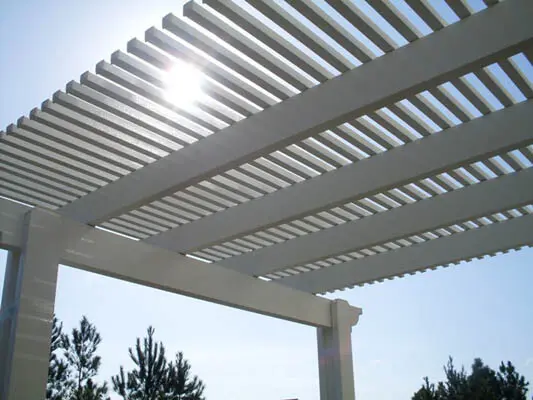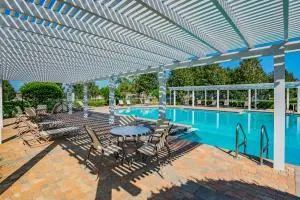Outdoor Structures: The Backbone of the Landscape
During the last few years, the backyard living concept has evolved from a deck or patio area to true outdoor living spaces complete with full kitchens, eating, sitting and living areas. And with this rise in the popularity of outdoor living spaces, it’s no surprise that outdoor structures such as gazebos, arbors, trellises, pergolas and the like are also more in demand.
“People aren’t looking for a simple outdoor space anymore. They’re thinking in terms of defining spaces with walls, ceilings and roofs, but only in an open sense to blend with the outdoors,” says Ernie Sears, president and owner of Backyard America of Manassas, Va. Ernie began his business as a building contractor specializing in outdoor structures, but since 1998 has been providing design services and fabricating kits for customers all over the country.
“Pergolas have really taken off over the last few years,” says Ernie. “They’ve gone from practically zero percent of our business to the single largest segment.”
Michael Mendelsohn, owner of Mendelsohn Construction in Scottsdale, Ariz., is also seeing his business grow as a result of more outdoor structures. “Every home I’m doing, we’re enlarging the back patio areas — even after the plans are done. People want more multi-use living centers with TVs and full kitchens.”
For Contractors, Not Much Difference Most outdoor structures are some sort of variation or combination of a deck, patio, pergola, arbor, trellis or gazebo, and sometimes they may be of a custom design or even go by different names to reflect their function or region of the country (lanai, ramada, veranda). But they all serve the same basic function: to provide an aesthetically pleasing place to hang light fixtures, fans or A/V equipment, provide shade or a break from the wind, and even as a place to locate cooling misters or infrared heaters.
“These structures are all about expanding use,” says Ernie. “People want to get more useful hours per day and more useful days per year from the outdoor living spaces.”
From a contractor’s standpoint, the same basic principles of design and construction apply as to the main house: use materials and design similar to those of the home to blend the two structures, make sure you follow all codes — especially those regarding setbacks and electrical/gas hookups, and choose materials and build carefully so that the structure will stand up to the elements.
“Where snow load is a concern, most pergolas will have less structure on top to reduce surface area, and where wind load is a concern, make sure you have the structure properly anchored to the ground,” says Ernie. “But those are all things most contractors know anyway.”
“These types of jobs tend to go up very quickly, and they impress the neighbors,” he says. “These structures are very visible and can be a way to open the door to larger jobs.”


